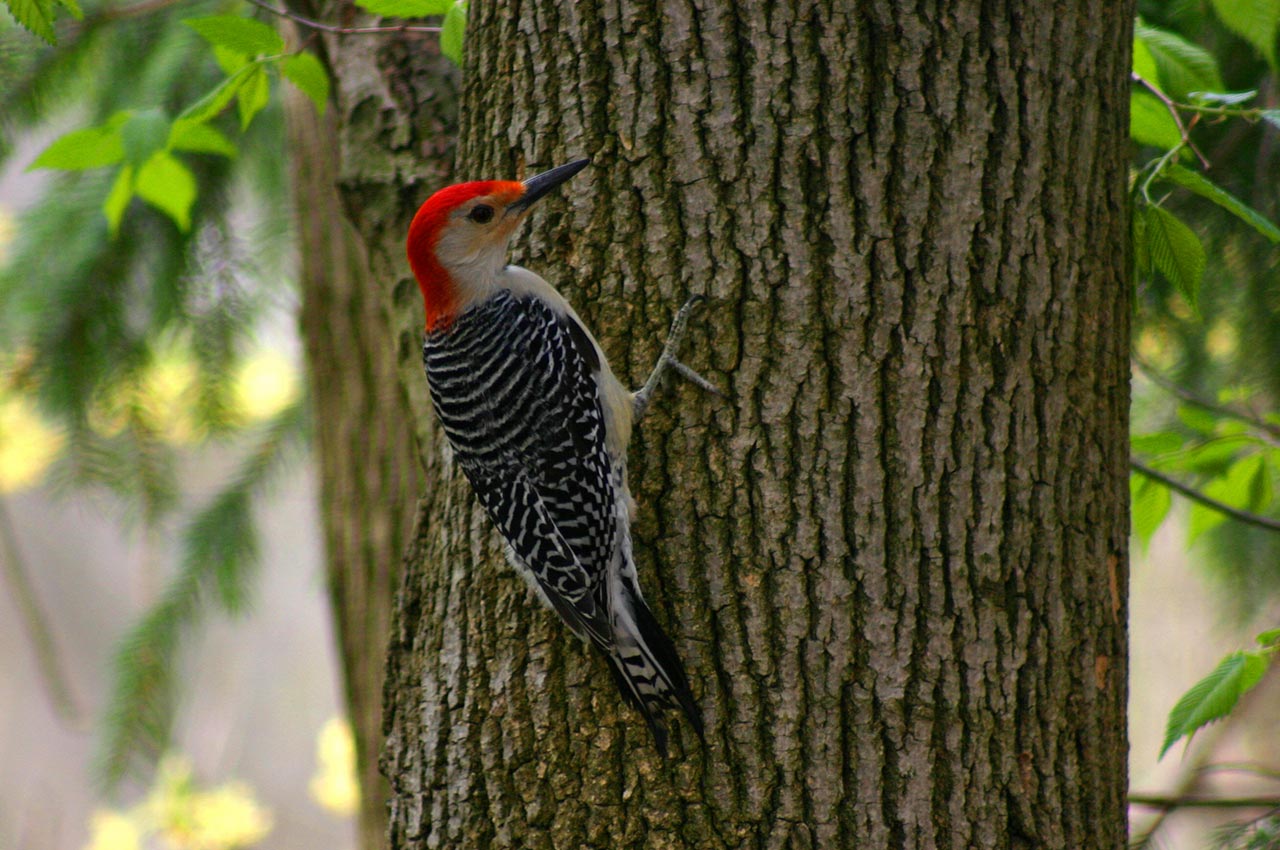Woodpeckers Unleashed: Discovering the Wonders of These Skilled Tree Mountain Climbers
Woodpeckers, with their unique markings and rhythmic drumming echoing via wooded areas, hold an one-of-a-kind location in the avian globe - Woodpeckers in Florida. As we dig right into the complex information of woodpeckers' nesting practices, feeding strategies, and the ongoing conservation initiatives to protect these exceptional birds, a much deeper gratitude for their location in nature unravels.
Makeup and Adaptations
When taking a look at the makeup and adjustments of woodpeckers, one can observe exceptional functions that enable these birds to flourish in their specialized eco-friendly specific niche. Additionally, woodpeckers have zygodactyl feet, with 2 toes encountering onward and two dealing with backwards, offering a company grasp on tree trunks while they browse for food or drum for communication.
Moreover, woodpeckers have an unique tongue framework that is long, barbed, and sticky, allowing them to extract insects from holes in wood. This specific adjustment allows woodpeckers to manipulate a food resource that is unattainable to lots of other bird species. On the whole, the composition and adaptations of woodpeckers showcase the amazing evolutionary options that have allowed these birds to prosper in their arboreal habitat.
Drumming Actions
Having actually explored the composition and adaptations of woodpeckers, the emphasis currently changes to recognizing their drumming habits, a distinct element of their interaction and territorial screens. Drumming is an essential type of interaction among woodpeckers, offering multiple purposes such as developing areas, bring in mates, and signaling alarm system. Each woodpecker species has a distinct drumming pattern that aids people acknowledge participants of their own species and identify them from competitors or killers.
Woodpeckers produce drumming noises by swiftly pecking on powerful surfaces such as dead trees, utility posts, or even metal things, developing a series of balanced beats. The strength and speed of drumming can vary based upon the function; for instance, a fast drumming series might represent hostility in the direction of intruders, while a slower and softer drumming pattern might suggest courtship (Woodpeckers in Florida). In addition, woodpeckers may adjust the regularity and duration of their drumming to communicate details messages effectively
Nesting Practices
Checking out the nesting practices of woodpeckers reveals fascinating insights into their reproductive habits and habitat selections. Woodpeckers are recognized for their unique nesting preferences, typically digging deep into dental caries in trees to develop protected spaces for raising their young. These cavities serve not only as a nesting site but also as a secure refuge from predators and inclement weather.
Woodpeckers exhibit a high level of fidelity to their nesting sites, often returning to the very same area time after time. This actions highlights the importance of ideal environment schedule for their reproductive success. The choice of a nesting site is important for woodpeckers, with elements such as tree species, height, and degeneration phase playing considerable functions in their decision-making process.
Interestingly, some woodpecker varieties are recognized to excavate multiple dental caries within their region, supplying themselves with alternative nesting choices. This technique may offer as a kind of insurance coverage against potential hazards or disruptions to their primary nesting website.

Feeding Methods
Woodpeckers use a variety of specialized feeding methods to acquire their key food sources. One of the most distinct feeding actions of woodpeckers is drumming, which involves rapid pecking on trees to discover bugs under the bark. This drumming not just helps them locate victim however likewise functions as a method of interaction with other woodpeckers. Woodpeckers have strong, chisel-like beaks that allow them to drill into wood effortlessly. When a hole is produced, they utilize their lengthy, barbed tongues to extract insects such as ants, beetles, larvae, and spiders. These tongues are covered with sticky saliva that assists trap the target. Woodpeckers are also known to dig deep into dental caries in trees to gain access to covert insect larvae or sap. Some species, like the acorn woodpecker, shop nuts in specially developed openings called granaries. This strategic storing of food assists them make it through throughout food shortage periods. Woodpeckers are really amazing in their feeding methods, showcasing versatility and intelligence in procuring their nourishment.
Preservation Efforts
Amidst the intricate feeding strategies exhibited by woodpeckers, the conservation initiatives aimed at securing these interesting birds play explanation an essential duty in protecting their habitats and populaces. Woodpeckers deal with various threats to their survival, consisting of habitat loss due to logging, climate adjustment altering their communities, and crashes with manufactured learn this here now structures such as structures and cars - Woodpeckers in Florida. Guardians are actively working to address these difficulties and guarantee the lasting well-being of woodpecker varieties

Education and public recognition campaigns are also essential elements of woodpecker conservation initiatives. By increasing awareness concerning the significance of these birds in maintaining healthy and balanced forest ecosystems, preservationists can gather assistance for habitat preservation efforts and advertise accountable land management methods. Through collective efforts between scientists, policymakers, and regional areas, we can work together to safeguard a future where woodpeckers prosper in their all-natural habitats.
Verdict

Comments on “Indigenous Woodpeckers in Florida: An Overview to Species and Behaviors”